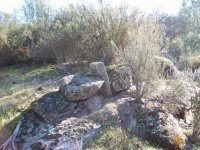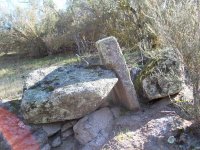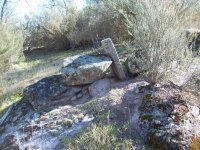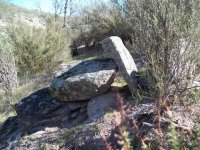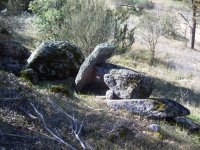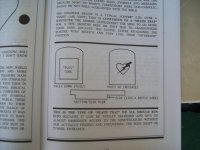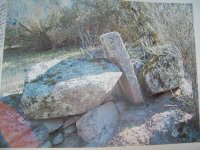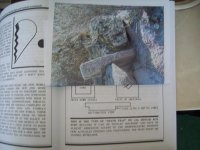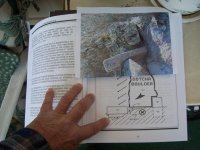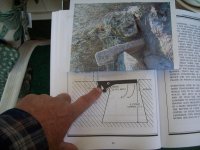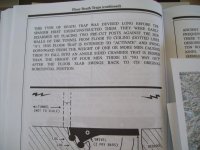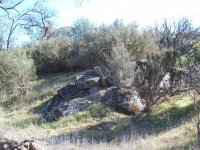Connecticut Sam
Bronze Member
- Sep 28, 2007
- 1,797
- 142
- Primary Interest:
- All Treasure Hunting
Thank you for the information, my good man. Take care.
Follow along with the video below to see how to install our site as a web app on your home screen.
Note: This feature may not be available in some browsers.
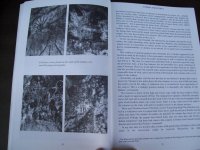
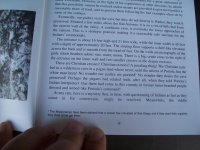
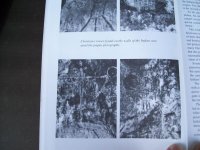
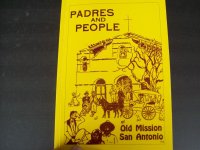
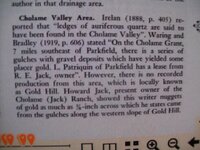
This story is not mine, but I am starting the thread for the person researching it.
Best-Mike
Legend of the Lost Padres Mine
by Virginia Wegis
Was there once really a fabulous gold mine in the rugged San Emidio Mountain Range South of Fort Tejon? And was there also, a curse on this mine? Legend says there was.
According to the story one day in 1862 an exhausted prospector arrived at Fort Tejon. He was half starved, his clothes were in rags, and his feet were torn and bleeding. He staggered under the weight of a heavy sack which he carried on his back.
There were a few idlers standing outside the fort's trading post and they directed the man into the store. Here he dropped the sack and its contents spilled out onto the floor before the startled eyes of the bystanders. At their feet lay at least twenty pounds of pure gold in chunks of all sizes.
The manager of the store ordered the others to put the gold back into the sack, then some of the soldiers on duty took care of the weary man. He was given fresh clothing and food His feet were bathed and bandaged. When he had recovered somewhat he told his story.
He said he had been prospecting through the back country all spring and summer. About ten days before he had chanced upon a spring or perhaps it was a well, as it seemed to have been hewn by hand out of the solid granite and formed into a square basin which was brimming with water. He made camp by the spring and slept soundly through the night. In the morning he found to his dismay that his three pack burros had wandered away. He spent several days looking for them but to no avail. Then one day after crawling through an almost impenetrable thicket of heavy brush he discovered himself in a wide clearing, about an acre in size. In the center of this bare spot was a huge outcropping of rock which appeared to have been lifted and fractured by some gigantic upheaval and there, shining in the great fracture, were masses and masses of solid gold. Scattered everywhere around the outcropping were chucks of gold, gleaming and glinting in the sunshine.
The prospector always carried a sack with him on his travels and now he filled it with the precious gold metal which lay on all sides. This done, he started North on foot, leaving all his possessions at the spring, including his food, since he could not carry anything but the loaded sack. He did have a scrap of paper in his pocket and when he stopped to rest he scribbled a rough map on it, showing as best he could the location of the rich find.
When the prospector was fully rested and his feet had healed he could think of nothing but to return to the mine. He persuaded the manager of the trading post and several other men at the fort to go with him. As the group as about to leave an Indian from the nearby Indian village confronted them. This Indian, whose name was Tucoya, begged the men not to go, warning them that if they did find the mine and took gold from it, they would never live to go back to it again. Then men laughed and paid no attention to the warning but they had only gone a short distance when the prospector's horse shied at a rattlesnake and bucked his rider off. The man's neck was broken and he died a short time later.
In going through the dead man's things, the storekeeper found the map he had drawn, showing the way to the mysterious spring and the gold covered clearing. This made him even more determined to find the treasure for himself. He took several vaqueros with him and after about three days of riding they reached the cool spring which was just as the prospector had described it. They even found his abandoned blankets and camp equipment, but though they searched the entire area for several days, they were unable to find the strange clearing and the golden ledge.
When they returned to the fort they visited the Indian, Tucoya, to find out what he knew about the matter. Tucoya told them that long before he was born some white men had come to his village. These men had worn long robes and had ropes of beads fastened to their waists. They built a smelter in San Emidio Canyon. Tucoya's father had helped them and from them he had learned to speak English. When Tucoya was a young boy more priests had come. They built huts at San Emidio and remained there. They baptized the Indians and taught them their religion.
Every spring some of the priests would leave Tejon with thirty or forty men and as much as one hundred pack horses. They would be gone all summer and when they returned the horses were loaded with gold. They refined this ore in the smelter, then worked it into yellow bars. Once a year they loaded the bars onto horses and went South. Many of the Indians went with them as far as the river which the priests called the Colorado. Here they were met by other priests who ferried the precious cargo across the river and took it away. The Indians never knew where they took it or why, but they enjoyed the trips and the activity.
One summer Tucoya went to the mine with the other workers and spent several months there. When they left the priests cautioned him never to reveal to anyone where he had been. A superstition grew up among the simple Indians that anyone attempting to steal from the mine for his own profit would come to some bad end.
This went on for several years. Then one day a war party of Piutes from across the Sierra Nevada attacked the village at the San Emidio. When they finally left, all the priests and most of the Indians had been killed. After that no Indian would go near the mine again and with the passing of time no one was left who even knew the way except Tucoya and he never spoke if it to anyone.
But the word was out now and for the next twenty years prospector after prospector combed the mountains, hoping to find the lost mine. One man, a Frenchman, was said to have found it and he, too, was killed when his horse lost its footing and slid down a steep embankment.
Perhaps that would have ended it if Tucoya had not finally decided to reveal the mine's location. A cousin of his persuaded him that since he was the only one left alive who knew where it was and since he was a very old man, he should shared his secret with others.
They had no trouble getting a party together and, in spite of his years, Tucoya set out in an Indian trot. They traveled for two days, covering about thirty five miles each day. At the close of the second day they came to the spring. There it was, just as the prospector had said, a square shaped trough cut out of the rock but choked now with vegetation. Since it was nearly dark they decided to spend the night there, then go on in the morning to the mine. After the others had spread out their bedrolls, Tucoya went a few steps away to pray.
Suddenly he gave a sharp cry. He returned to camp, shaking with terror. "I have seen them, the priests" he said. 'They appeared to me in the sky when I looked up to pray. They do not want me to tell where the mine is and if we proceed farther, all of us will surely die!" With that he picked up his things and headed for home. In the morning, his disappointed companions had no choice but to follow him.
Tucoya died long ago. If there ever was a mine operated by the Mission Fathers, he and nature have guarded the secret faithfully. To this day no mine has ever been found.

Sorry "TAY", but my intent is not to help Gollum, but to keep him from wasting his time and effort, on something which "has" been found.
Its rough country in there, and a humbug, is just that.
Its been found, and under claim, as we speak. The asistencia up there had a "stockade", charcoal pits, etc, etc.
Theres even more,,, like 60'+ rock signs, to where they stashed it, for about 10 yrs that they couldnt ship out.
The "area" is full of cyns, and each one mined, was "marked', primarily with LRG quartz boulders, (square in shape), at the mouth of each cyn used.
Your friend Gollum, shouldnt be so haughty. Im only trying to assist him, so that he doesnt go in the wrong directions.
You and he want confirmation of who I am, ask Pat Keene. Who do "I" ask for confirmation of you guys??
Nevermind, cause I dont work that way.........
HOGE
PS: The actual mine is in LA county, not Ventura county. NOT the Redrock/Gillette area.
Its clear (to us) that Padres were in there, because it was SO rich, that they would keep it secret, compared to other cyns. It also is the hardest to access. This place was first found about 1690, most likely in Kino's time. It appears that the Dominicans knew about it, after the SOJs found it. The "signs" are amazing, such as the 6' "diamond" carved into a prominant rock, within the cyn. LRG white quartz "marker"' at the mouths of the cyns mined, etc, etc!! We even found the wagon/cart tracks ground 6" into solid granite. After 300+ yrs, they can still be seen, out in that most formidable area.
Nuff 4 now!
HOGE
Not to disrespect Hoge but I'll personally keep looking for the site regardless of what you claim. If I had found it, I wouldn't be in a forum telling others to stop because I had already found it. I don't know you and ill take what you say with a grain of salt until I see some proof.
>>>>>>>>>>>>> proof is in the pudding / im with this guy - TapoutkingHi guys, I'm new to the site. I live in Oxnard. I use my horse in my searches so I can cover more ground. I'd love to help in the search. I've been exploring the Los Padres since I was a kid. Just a few months ago I came across this site and that has started many hours of research. The best and most logical story of the lost los padre was a book bought at the Ventura mission. In closing i Hope to help in the search.
Thanks,
Hector.
